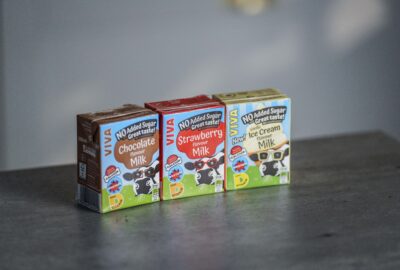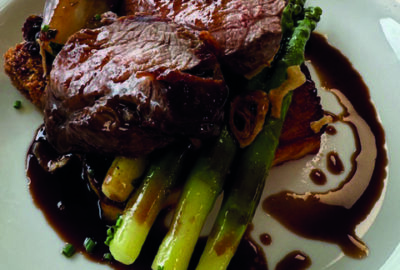The last Days of Summer Sowing…
With the fruit (and veg) of your labours springing up, maturing, and being harvested in July and August, you can be forgiven for lacking a little motivation to plant more seeds, but it can be extremely worthwhile, especially if you want crops for autumn, winter, and even early spring in 2024. Long days, good weather and some space in your plot, pots or garden means the conditions can be excellent – the trick is choosing the right crop varieties and looking
after them correctly.
Here are our tips:
FAST-GROWING SALAD
There is still time to get seeds sown to give you a yield before autumn arrives so get some fast-developing crops in the ground now. Lettuce, radishes, spring onions and spinach won’t take long to sprout in the summer sunshine, so sow weekly until September to ensure one more crop before winter comes. If temperatures are high, you will need to make sure they get enough water, but you can sow many of these varieties in gaps alongside your maturing cauliflowers, cabbages, and squash, which will provide some partial shade.
PEAS AND GREEN BEANS
While these are often the first treats enjoyed in late spring and early summer, the harvest will often not last very long, especially for the dwarf varieties. Sow again now and you will have beautiful crops in September and October.
WINTER VEGETABLES
If you’re looking for some classic root veggies for your winter dining table, you need to get them in the ground quickly. Plant out your leeks, cauliflower, kale, brussels sprouts, and potato tubers now to avoid disappointment when the roast dinner season rolls into town.
PLANT FOR SPRING
While it seems a long way off, there really isn’t anything better after a dank and dismal winter than a plant coming to life in early spring and providing a bounty for the kitchen. Chard, cabbages and even broccoli can be forgotten heroes that come to life and build excitement for the coming growing season.
PAK CHOI
These can be sown in spring but they’re also great when planted out in July for an autumn and even winter crop. Make sure they have water and some shade especially if it’s a particularly hot summer, but once in the ground they will also provide shade to other leaves and salads. They may need some cloches if temperatures drop too much but the baby leaves can generally be harvested after 30 days and used in salads.
Foraging in July and August
One of the optimum times for foraging in the UK and Ireland, there is an abundance of goodies to keep an eye out for and with the best of the weather, there is no better time to enjoy the outdoors. Here’s what to look out for as summer draws to a close:
BLACKBERRIES
Possibly the most foraged of the berries, brambles can be found across the UK and Ireland and provide a wealth of fruit. Keep your eye out as you’re on walks and bike rides in July and head back to the hotspots in August with your containers. Fantastic to use in a whole host of summer desserts, dressings, sauces, mueslis, tarts, and pies, they can also be frozen for use later in the year.
WILD STRAWBERRIES
These small but mighty delights don’t give you the size or yield of the commercial strawberries we buy and enjoy throughout summer, but their flavour is sublime. You may struggle to find enough to use in cooking, but they’re best eaten straight from the plant anyway!
BILBERRIES
Found in heaths, hedges, woods, and moors, they’re delicious eaten straight from the plant but even better when stewed slightly with sugar and used to fill all manner of sweet pies, puddings or tarts. Providing a real point of difference, they’re also great for jams.
ELDERBERRIES
Another late summer treat that are also full of vitamins and nutrients, both the berries and flowers are great for cordials, juices, and wines, whilst also brilliant in classic crumbles and preserves.
CRAB APPLES
The sourer cousin of the cultivated apples we enjoy year-round, crab apples are a forager’s dream and widely found. The different varieties can vary in taste, texture and aroma but are usually sharper so generally preferred as a cooking apple. With a high pectin content, they’re brilliant for jams, jellies, chutneys and preserves but can also be utilised in cordials, liqueurs, and cider.
PIG WEED
Not the most magical sounding of forage, this wild spinach is also known as Fat Hen or Dirty Dick, which aren’t much better sounding. A staple ingredient hundreds and thousands of years ago, it can be steamed and utilised in soups and
dressings.
CHICKWEED
An unsung hero, chickweed is also jampacked with goodness and is very versatile. The flowers are great for garnishes, the leaves work superbly in dressings, pesto and salads and the stems can be gently fried or steamed and eaten as a
vegetable.
CHANTERELLE MUSHROOMS
The generic name given to a small group of mushrooms that are found in woodlands and come into their own in late summer. Probably the most widely foraged of the fungi, they have a distinctive colour and wavy trumpet shape with a fruit-forward taste and smell. Superb simply fried in butter but also great in pasta, risotto, and sauces.
MALLOW
A nutritional powerhouse with protein, iron and Vitamin C, Mallow nutlets and seeds offer great snacking capabilities while the leaves can be treated like spinach, either lightly cooked or to boost soups. With a pea-like taste, the flowers are also edible.
MEADOWSWEET
An ancient medicinal ingredient, it is often used as a botanical in gin and was previously used in the production of mead. When it comes to taste, some say it has an essence of almond, while others say cucumber or watermelon. Great in drinks, it can also be used to flavour ice cream, panna cotta and custard.


